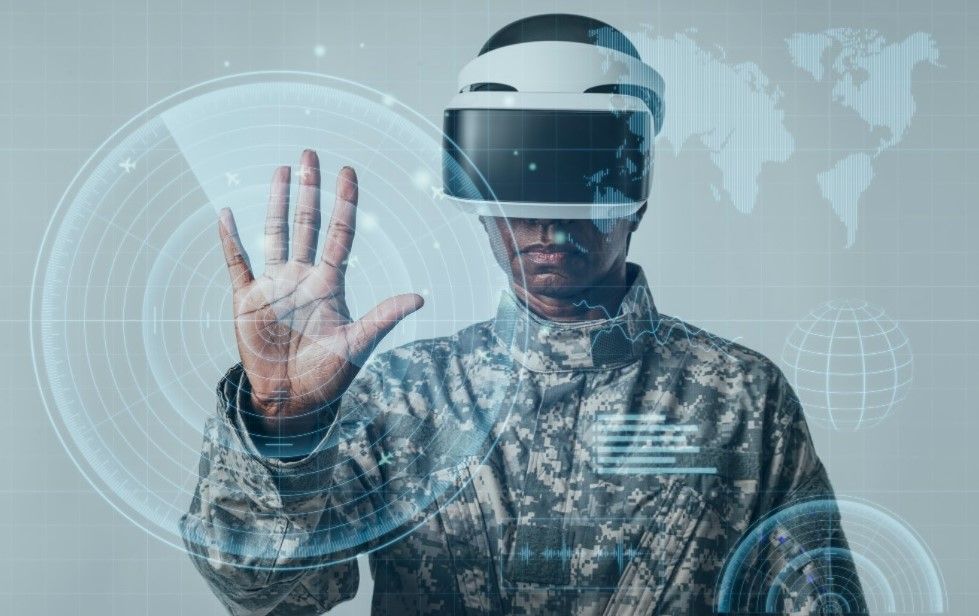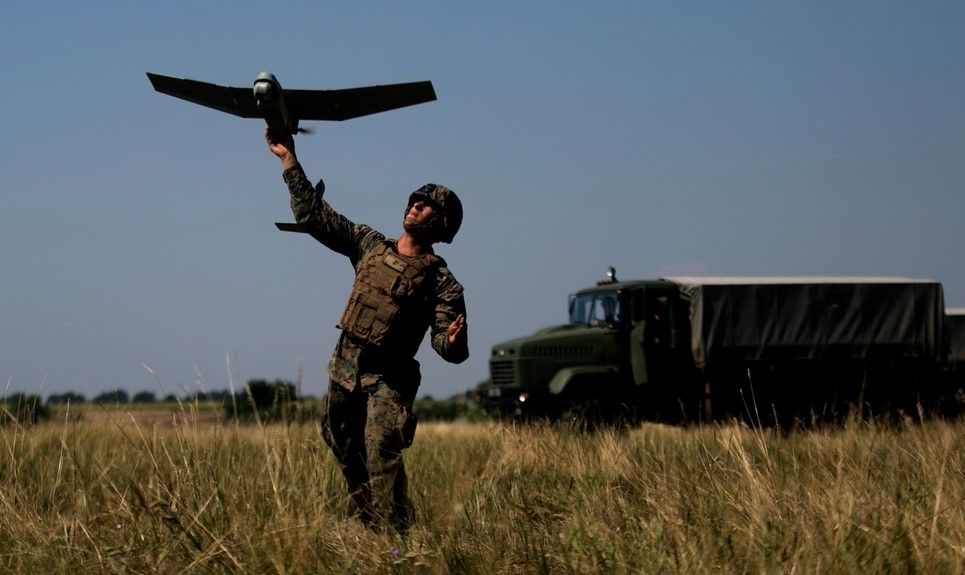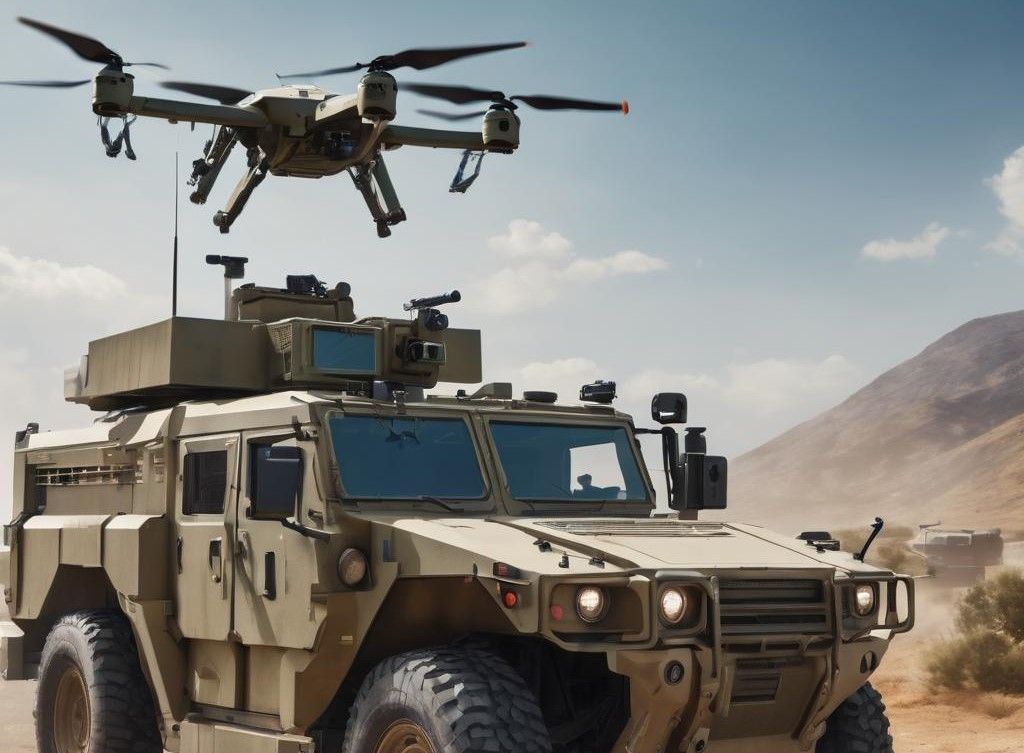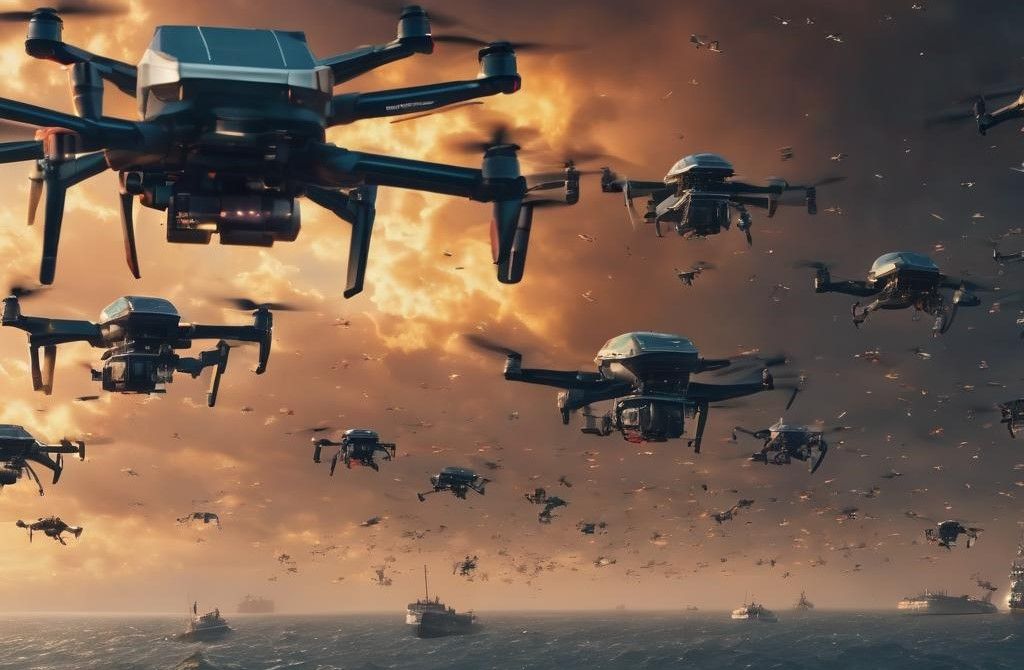The Technological Battlefield Playing Out in the Ukraine War
How the fight for the latest drone or autonomous command centre is playing out.

Watching the evening news from Ukraine, it would be easy to think that the fighting is from a historic film about the First World War. Lots of soldiers in trenches, ducking mortar bombs and artillery shells as they scrabble around in the mud. The whole scene is very 20th century.
Yet the Great War was also a technology race, where both sides sought to improve tactics, armament, and firepower to gain the upper hand. Tanks, flame throwers, and poison gas were all technological advances to try and win war, while Germany’s victories over the Russians were greatly helped by their use of radio communications – a scientific leap of the times.

Today’s fighting in Ukraine is no different, as both sides struggle to be the first to achieve a technological edge to break the deadlock. Currently, much of that focus is on improving drone capability, advancing artificial intelligence usage, or a combination of the two.
For example, by combining artificial intelligence and ‘eye in the sky’ drones, the task of finding and destroying the enemy has become a lot quicker and easier.
“Ukraine has been a great example of how the ubiquity and proliferation of sensors has allowed them to more effectively close kill chains [speeding up the time between finding a target and destroying it],” explains Jennifer McArdle, senior director of defence programs at CAE and a specialist in training for future wars.
This is already happening.
“We launch the scout, identify the enemy target. Set our scout to circle around there and then launch the kamikaze,” explains Vitalii, who runs the small drone start up Air Logics. “If you have a kamikaze drone that can carry three kilograms of explosive for 15 or 20 kilometres, which is basically artillery, and effectively, accurately hit the target, then I think that is a great advantage.”

A further example of the advances being made was recently demonstrated with the combination of a drone/robot pairing designed to autonomously work together in performing reconnaissance and infantry support tasks.
As the industry journal C4isrNet reported, “Defense companies Elistair and Rheinmetall Canada on Jan. 16 announced the successful demonstration of their paired Khronos drone and Mission Master SP robot.”
The goal, like many military developments, is to keep soldiers safe by deploying machines in their place.
The capability of this latest technology shows how far drone design has come since Russia’s invasion.
As the report notes, “Elistair’s Khronos deploys from a small box and can stay aloft for 24 hours while tethered to a moving object, and Rheinmetall’s eight-wheeled Mission Master SP is capable of following troops and shuttling smaller items such as sensors and weapons.” Technological advances which were previously the reserve of either multi-million-dollar projects or science fiction. Today, autonomous drones and robots are a reality for the battlefield.
“The Mission Master family of Uncrewed Ground Vehicles (UGVs) can carry a variety of ISR payloads,” explains Alain Tremblay, the vice president of business development and innovation at Rheinmetall Canada. “But Khronos definitely has its advantages, and we see international interest given its innovative capacity to adapt to current and future complex theaters of operation.”

Both Russia and Ukraine are deploying massive numbers of drones onto the battlefield, regardless of whether they are designed to be used as weapons, such as kamikaze drones, or as reconnaissance tools for spotting troop movement or artillery spotting.
“We’re now estimating that the Ukrainian armed forces are losing some 10,000 drones a month,” says Ulrike Franke, a senior fellow at the European Council on Foreign Relations. “So just the extent to which drones are being used is definitely noteworthy.”
But as the proliferation of drones, radar, and satellite imagery continues, then an overwhelming amount of data is being provided. With thousands of data points being made across a battlefront that is thousands of kilometres wide, human decision-making is being tested to an extreme. This is where advances in artificial intelligence are now coming to the fore.
“If you’re able to use AI to go through that information and to be able to present information that matters for a decision-maker, you have speed,” says Franke. “You can work through that decision-making cycle much more quickly than you can right now.”
AI is already being used by commanders in Ukraine to assist them in planning what to attack, when to utilise resources, and how to use them. It’s another example of how modern technology is changing the way war is fought. In this case, it is a sort of Google Maps for armies.
“The future of warfare is going to be characterised by thousands of unmanned aerial vehicles, unmanned surface vehicles, and unmanned underwater vehicles. And what is going to be the differentiating factor among all these vehicles is the level of intelligence, the level of autonomy integrated into each one of those vehicles,” says Brendon Tseng, President of AI Shield a company researching AI controlled vehicles and drones. “You’ll see unmanned systems outnumber the number of warfighters on the front lines of these conflicts. They will play a key role in any battle of the future.”

At least for now, fully AI controlled drones do not exist. But it is only a matter of time. Furthermore, the speed at which progress on drone design and AI is being made means that it is likely to be sooner rather than later.
As it is, whether they are consumable kamikaze, large and long-range, remote controlled, or autonomous, the war in Ukraine has demonstrated that drones will be regular players in wars of the future. And that technology will always be a central part of every battlefield.
Read more about this topic with this articles: Should the West Fear China’s Growing Drone Capability?, US Military Outlines Anti-Drone Development Plan, or Drone Manufacturers Work to Conquer the Arctic.
Photo credit: Flickr, Rawpixel, Gencraft, Rawpixel on Freepik, Gencraft,

